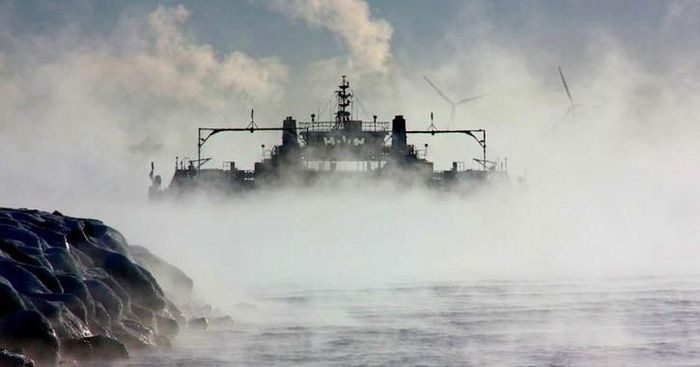American researchers believe that an almost limitless supply of fresh water exists in the form of water vapor over the oceans that has yet to be harnessed.
A new study conducted by the University of Illinois Urbana-Champaign suggests that investing in harvesting water vapor from the oceans could address the lack of fresh water in certain areas around the world.

A structure designed to harvest water vapor from the ocean by the research team. (Source: Indiatimes).
According to the researchers, they examined 14 water-scarce locations across the United States to assess the feasibility of a model that can harvest water vapor from the ocean, utilizing condensation of water vapor that can be filtered to produce fresh water, and implementing this method in the context of climate change.
The scientists installed experimental structures to capture water vapor at sea, in an area approximately 210 meters long and wide, and 100 meters high.
After analysis, the research team concluded that capturing humid water vapor from the ocean’s surface is feasible for many water-scarce regions around the world. Their estimates suggest that the water output from these structures could provide fresh water for a large population in subtropical areas.
Praveen Kumar, a Professor of Civil and Environmental Engineering and the leader of the research team, explained: “Water scarcity is a global issue that severely impacts the United States. Specifically, low water levels in the Colorado River basin affect the entire western region.”
“However, in subtropical regions, the adjacent oceans continuously evaporate water under the sun due to very few clouds throughout the year.”
The research team noted that techniques previously applied to obtain fresh water (such as wastewater recycling, cloud seeding, and desalination) have failed due to inefficiencies in desalination plants, as well as heavy metals present in wastewater and saline water.
“We need to find ways to increase the supply of fresh water because conserving and recycling water from existing sources will not be sufficient to meet human demand. We believe that our newly proposed method can achieve this on a large scale,” Kumar stated.
Afeefa Rahman, a co-author of the study, concluded: “Climate forecasts indicate that the amount of water vapor over the oceans will increase over time, potentially providing even more fresh water. Therefore, the idea we are proposing will be viable under climate change conditions.
These research results offer a much-needed and effective approach to adapting to climate change, especially for vulnerable populations living in arid and semi-arid regions around the world.”


















































